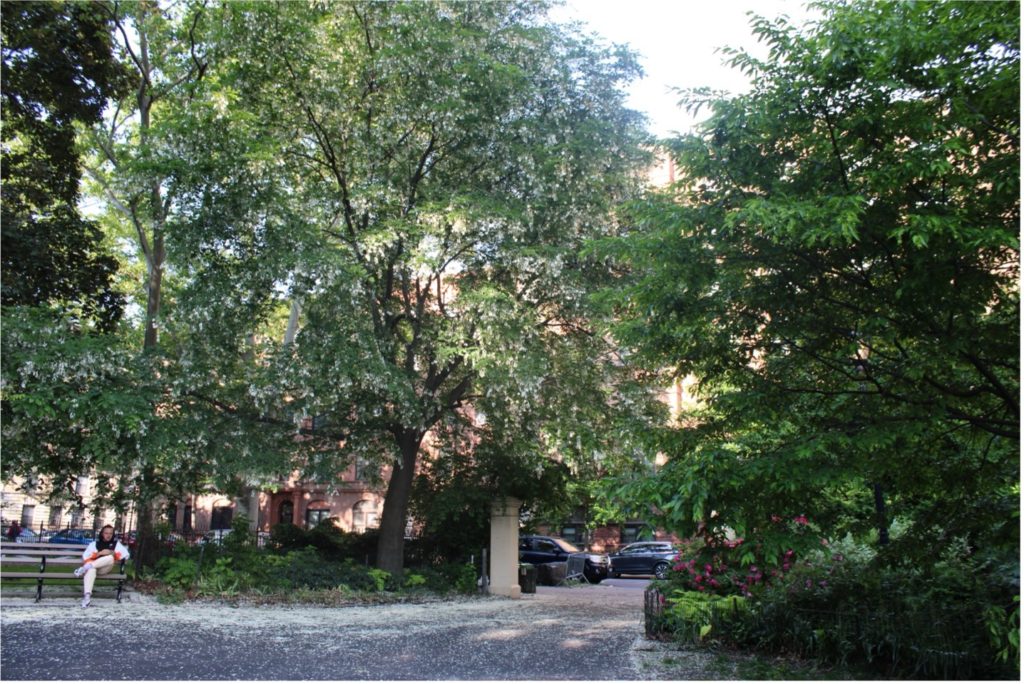Written by: Rashawn Khamari Merchant
During this year’s spring, it has not been uncommon to hear about the troubles allergies have caused people. Watery eyes and coughing have been apparent as plant particles have covered areas as people try to enjoy the season. While pollen and plant matter have always been around, climate change may exacerbate their effects and worsen over the years.

Rashawn Merchant/Earth Shiners
The increasing amounts of CO2 in the atmosphere are leading to hotter temperatures across the globe. Scientists have agreed that this temperature increase leads to unfavorable human health changes. As plant conditions respond to Earth’s temperatures, there is a connection to how changes in plant growth will affect us as humans, and plants are directly linked. CO2 is the supplier of carbon for plants’ photosynthesis process. Interestingly, as more CO2 will lead to lush plant environments, carbon will not discriminate between the plants we want and those we do not. While most would want more rose bushes, unwanted allergy-causing plants such as ragweeds or poison ivy would also grow.

Rashawn Merchant/Earth Shiners
According to Peter Gergen, M.D., 30 million people are affected by plant-based respiratory allergies. When inhaling heavy amounts of pollen, sneezing, inflammation, and wheezing are common side effects. Ear, nose, and throat infections can occur in people with severe allergies.
Three distinct plant-based inputs relate to pollen production: spring trees, summer grasses, and ragweed (Ambrosia spp.) in the fall(Ziska et al., 2008). Research on pine trees conducted at the Duke University Forest Free-Air CO2 Enrichment site showed that elevated CO2 levels resulted in early pollen production in younger trees( LaDeau & Clark, 2006).
Dr. Lewis Ziska also notes that fossil fuel burning may correspond with allergens. Diesel products help aeroallergens move deep into the airways.

Rashawn Merchant/Earth Shiners
Like many of Earth’s changing climate conditions, we must look at the past to see how human planning has enlarged its effects. In 1949, the USDA released a Yearbook of Agriculture recommending male trees for street planting. Their advice was that male trees should be selected because they do not release fruit and seeds, making them easier to clean. Wholesale growers began selecting trees that were clones of other males. While these trees were considered “easier” to manage(they still shed leaves and branches), they ultimately are the ones that produce pollen and lots of it.

Rashawn Merchant/Earth Shiners
Botanical Sexism is a theory created to combat the consequences of predominantly planting male trees. Planting other female trees would counteract the pollen production of male trees positively. Supporting tree planting organizations would serve as a benefit as many have begun advocating for urban planting to balance the sexes during landscaping and renewal projects. In big cities, female trees would also better clean air toxins. Female trees could store toxins in their seeds instead of male trees releasing the toxins back through pollen.
In the meantime, consistent allergy medication can help reduce the severity of respiratory attacks.
Thanks for reading!
Copyright Earth Shiners Creative LLC 2023
Earthshiners@earthshinersmagazine.com
Leave a Reply